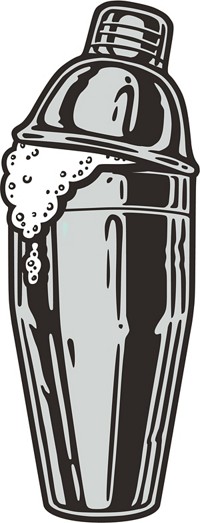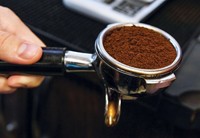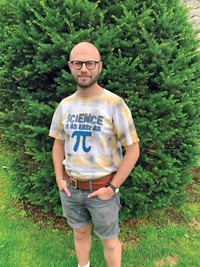Advertisement
Grab your lab coat. Let's get started
Welcome!
Welcome!
Create an account below to get 6 C&EN articles per month, receive newsletters and more - all free.
It seems this is your first time logging in online. Please enter the following information to continue.
As an ACS member you automatically get access to this site. All we need is few more details to create your reading experience.
Not you? Sign in with a different account.
Not you? Sign in with a different account.
ERROR 1
ERROR 1
ERROR 2
ERROR 2
ERROR 2
ERROR 2
ERROR 2
Password and Confirm password must match.
If you have an ACS member number, please enter it here so we can link this account to your membership. (optional)
ERROR 2
ACS values your privacy. By submitting your information, you are gaining access to C&EN and subscribing to our weekly newsletter. We use the information you provide to make your reading experience better, and we will never sell your data to third party members.
Science Communication
Newscripts
Soothsaying science and salt gets saltier
by Bethany Halford
January 23, 2021
| A version of this story appeared in
Volume 99, Issue 3

Science in the cards
Those looking for guidance in these uncertain times might be tempted to turn to tarot cards—a divination tool that’s been popular for centuries. Skeptics may scoff at such soothsaying, but tarot aficionados say the cards do have power: their ability to prompt a good story. Now card readers can draw on two tarot decks that tell their tales through science.

Women of Science Tarot, a deck from the online news media site Massive Science, features 56 inspirational women of science. “We were thinking about women in science who were forgotten. We were thinking about what these women can teach us about the future through storytelling,” Massive Science cofounder Nadja Oertelt tells Newscripts. “Tarot was a very natural way of putting it all together.”
The deck’s other 22 cards highlight scientific concepts such as extinction and gravity. Columbia University neuroscientist and artist Matteo Farinella illustrated the deck. After a successful crowdfunding campaign, the deck was picked up by MIT Press and is now available online and through booksellers.
The other deck, Science Tarot, has been around for more than 10 years and is available at madewithmolecules.com. Media producer Logan Austeja Daniel, writer and tarot interpreter Martin Azevedo, and biochemist-turned-science-artist Raven Hanna conceived the deck, which features artwork inspired by scientific discovery.
It has the same concepts as a traditional tarot deck, Azevedo says, but with a modern sensibility. Take, for example, “The Fool” card, which is usually represented by a person walking off a cliff. In Science Tarot, “The Fool” is depicted by a student walking off a cliff of books.
Science Tarot is “a covert science communication project to interest people who might be interested in tarot but not into science,” Hanna tells Newscripts. “It makes the relevance of science more palpable in people’s daily lives.”
Saltier salt
Earlier this month, the US Patent and Trademark Office granted snack maker Frito-Lay a patent that could help people cut down on salt without sacrificing any delicious salty flavor. The invention (US patent 10,881,123 B2) describes salt crystals with a stepped, or hoppered, shape and a method for making them on a large scale.

Table salt—known to chemists as sodium chloride, or NaCl—typically crystallizes in tiny cubes. But those crystals don’t dissolve completely on our tongues when we eat salty food, so we consume more salt than we actually taste.
Frito-Lay’s hopper crystals have a higher surface area and dissolve more readily than cubic salt crystals, so they deliver the same salty sensation with less actual salt. “The amount of salt applied to a food product can be reduced by at least 20% with no meaningful difference in saltiness perception by the consumer,” the patent says.
Noushine Shahidzadeh, an expert in crystallization at the University of Amsterdam, tells Newscripts that scientists have known about hopper crystals for well over a century but have only recently begun to decipher how they form. In the case of NaCl crystals, the hoppered shape arises by quickly precipitating a supersaturated salt mixture.
By combining a salt solution with ethanol, Frito-Lay scientists found a rapid way to transform an undersaturated salt solution into a supersaturated solution—precisely the conditions needed for forming hopper crystals in large volumes. “The alcohol is soluble in water and is known to decrease the solubility of the salt,” Shahidzadeh tells Newscripts. “Consequently, the salt will precipitate in the form of hopper crystals due its high concentration.” This is the first report of doing this type of crystallization on a large scale with a food-safe solvent.
Frito-Lay didn’t respond to Newscripts’ request for an interview. Perhaps the company thought our questions would be too salty.
Please send comments and suggestions to newscripts@acs.org.





Join the conversation
Contact the reporter
Submit a Letter to the Editor for publication
Engage with us on Twitter